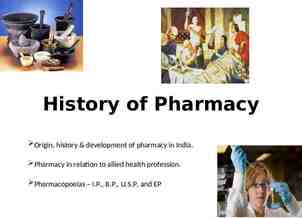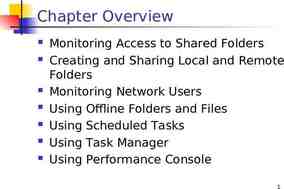Advising Diagnostic Report from EAB October 28, 2019
20 Slides72.26 KB
Advising Diagnostic Report from EAB October 28, 2019
Overview EAB Team visited ETSU on July 30th and 31st 14 Sessions covering 50 staff/students Explored six key areas concerning advising at ETSU: Mission & Definitions Organizational Structure Advising Technology Training and Development Policies and Processes Accountability
Advising and Operational Alignment As we strive to achieve the strategic initiatives identified in our 2016-2016 Strategic Plan, we are looking at a number of operational structures to assure that we are providing the best teaching/learning environments possible for our students and faculty. A student-centered advising experience is one way to assure that our students are successful. A holistic approach to student success is critical to support our student population. 73% of our students who “stop-out” are academically qualified to continue 61% of our graduating students change major at some point 54% of the major switches occur between colleges 53% occur within the first 2 calendar years Our students’ advising experience at ETSU is highly variable, yet we know it is a highly critical factor in student success. .
Summary Observations Committed cadre of staff and faculty who enjoy being part of the students’ academic journey Current structure is decentralized with wide variation in names, roles, responsibilities, professional vs faculty training, reviews, metrics, etc. High degree of autonomy for the colleges Creates an inconsistent student experience Concern that students may “fall through the cracks” at several points along the way
Recommendation “Decentralized but Standardized” advising model that uses college based professional advisors for all credit hours supplemented by faculty mentors at 60 credits. Balances the need for college autonomy and knowledge while allowing ETSU students to more seamlessly navigate and partner with resources on campus. While some things will remain the same, both college and central advising units will experience some changes.
How are we using the report and recommendations? Report affirms ETSU’s desire to establish an organizational structure that supports “Student Success Model” for structuring the student experience. Report provides a data footprint to assist with decision-making Consultation with EAB provided information about how other schools with a decentralized model provide a seamless student-centered advising experience for their students. The recommendations from the report will be a resource for our Implementation Task Force that will lead the transition to more standardization of roles, policies, and procedures.
What are some of the “wins” in this new model? A system of professional advisors and faculty mentors assures students both academic advising as well as career mentoring. Standardized training, policies, and procedures establish expectations for an advising experience that is consistent across campus. Professional career track for advisors with additional recognition and compensation
What’s not “standard” about our advising system now? We have 11 units with 6 different names: r Main Office e t n e C s s e S t u c d e n t c S e r v i u c e s S t n e d Center for Advisement and Student Excellence Stu r e t n e C t n e m e s i v d A y t i Univers Center f o r C DS
We use different names for “advisors” in different locations. Advisor Undeclared Advisor Faculty Advisor Counselor Mentor Student success specialist
First steps . Establish Implementation Task Force Visit some institutions with a decentralized but standardized advisement model, i.e., University of South Carolina, Coastal Carolina Identify plan for move to an all professional advisor model within colleges University Student Advisement Office and University Advising Center will report to Student Life and Enrollment effective January 1, 2020
Common nomenclature for advising offices and advisors Define roles and responsibilities for advisors and faculty mentors Develop a career ladder and performance expectations for advisors Addresses inconsistencies in levels, role and pay across the university Allows for career (and salary) progression Develop training programs for advisors and faculty mentors
Assumptions We have a committed group of professionals working in advising and all staff and positions are important and needed While responsibilities may change, all our current advising leaders will continue to have key leadership roles in the future We will pursue outcomes aggressively but will not sacrifice effectiveness Achieving the identified outcomes is an institutional priority
Outcomes Professional Advising in all colleges through 120 hours Faculty serving as mentors for students Agreements that advisors are able to spend a significant majority of time engaging in activities that directly support student success Professional career track for advisors with additional recognition and compensation Enhanced training opportunities with a common pool to provide additional support for professional development
Outcomes One information system for outreach, tracking and sharing information related to student success Increased consistency of roles, responsibilities, expectations and titles Executive Director of Student Success position to provide strategic campus leadership, oversight, collaboration, and accountability Expanded Student Help Desk in Student Center to support service, triage and referral Shared evaluation metrics for advisors related to student success
Advising Model Changes and Key Questions: Undeclared Advising, Special Populations, and Help Desk Undeclared advising moves to the colleges and allows for professional advising through graduation 3 positions would move to the Colleges Other undeclared advising and support positions would provide support for special populations and centralized help desk Learning Support Dual Enrollment Special Students
Key Questions How do we ensure advising support and referral for undecided students in the college model? How do we ensure advising support for special populations in the central advising center? What is a sufficient staffing level in the colleges and centrally to achieve the outcome? How will undeclared students be assigned to colleges? How will undecided students with no identified area of focus be advised? How will advisor positions in the colleges be selected? What is the role of the Help Desk and how will it be staffed?
Advising Model Changes and Key Questions: Medical Professions Advisement Medical Professions Advisement moves out of the College of Arts and Sciences to a Centralized Advising Model Key Questions What is the optimal structure and reporting for Medical Professions/and or Pre-Health Advisement? How do we ensure advising support for MPA/Pre Health students in the model? How are 1350 and the Pre-Health LLC best supported? How are student recruitment and professional development activities best supported?
Advising Structure and Key Integrated UniversityQuestions Structure Centralized advising functions integrated within the Division of Student Life and Enrollment Central advising functions report to the Assistant Vice President through an Executive Director of Student Success Central advising Help Desk for student support and referral Memorandum of Understanding with the Colleges Dotted line reporting from college advisors to Executive Director Centralized Structure Executive Director of Student Success University Advisement Special Population Advising and University Student Help Desk
Key Questions What is included in the MOU with the Colleges? What are the unique responsibilities of the Executive Director of Student Success? What are the reporting lines and responsibilities of leadership for the following areas within the new model? University Advisement Special Populations and Help Desk What are the resource implications of different models and timing of implementation?
November Implementation Implementation Team Identified and Begins Work January Team Identifies Plan, Phases and Timeline for Delivering Outcomes March Target to begin implementation of identified phase 1 outcomes May Target to begin implementation of identified phase 2 outcomes August Target to begin implementation of identified phase 3 outcomes

























